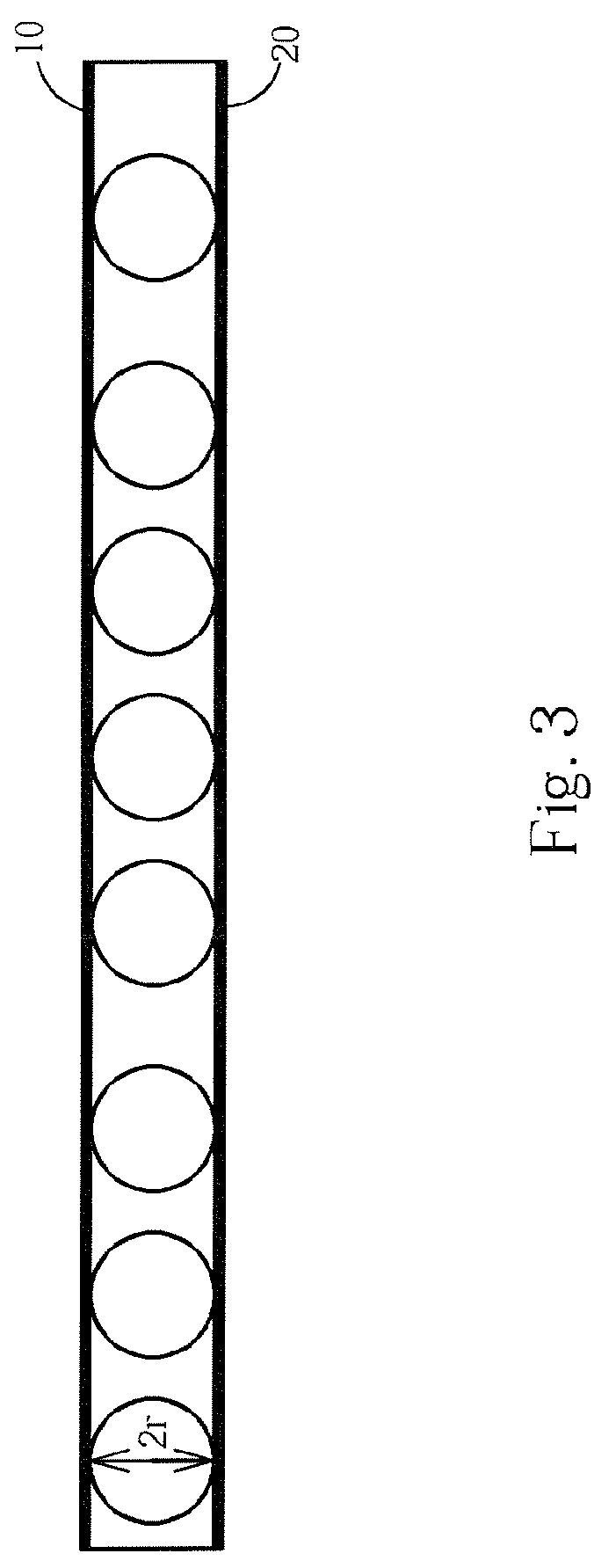Anisotropic conductive material
a technology of anisotropic conductivity and conductive material, which is applied in the direction of non-metal conductors, photosensitive materials, auxillary/base layers of photosensitive materials, etc., can solve the problems of not being able to disclose procedures, the difficulty of connecting circuit parts at very fine pitches, and the difficulty of connecting electrical components at ever increasing precision. achieve the effect of widening the operation window and better anisotropic conductivity
- Summary
- Abstract
- Description
- Claims
- Application Information
AI Technical Summary
Benefits of technology
Problems solved by technology
Method used
Image
Examples
Embodiment Construction
[0035]The present invention relates to an anisotropic conductive material that can be applied to bond two electronic components or two conductive surfaces / planes together. The anisotropic conductive material allows electricity to be conducted only in z-direction (or in thickness direction), but not along x- and y-directions (x- and y-directions are parallel to the substrate surfaces to be bonded together, and z-direction is perpendicular to the substrate surfaces). The aforesaid reference x-, y- and z-coordinate system and the conductive planes are demonstrated in FIG. 7. As shown in FIG. 7, the anisotropic conductive material (not explicitly shown) is filled between the conductive plane A and conductive plane B with bumps 70 therebetween.
[0036]A filamentary nickel powder dispersed in a thermosetting epoxy resin forms the basis of an anisotropic conductive material system. Various forms of the anisotropic conductive materials, such as anisotropic conductive film (ACF), anisotropic c...
PUM
| Property | Measurement | Unit |
|---|---|---|
| diameter | aaaaa | aaaaa |
| particle sizes | aaaaa | aaaaa |
| particle diameter | aaaaa | aaaaa |
Abstract
Description
Claims
Application Information
 Login to View More
Login to View More - R&D
- Intellectual Property
- Life Sciences
- Materials
- Tech Scout
- Unparalleled Data Quality
- Higher Quality Content
- 60% Fewer Hallucinations
Browse by: Latest US Patents, China's latest patents, Technical Efficacy Thesaurus, Application Domain, Technology Topic, Popular Technical Reports.
© 2025 PatSnap. All rights reserved.Legal|Privacy policy|Modern Slavery Act Transparency Statement|Sitemap|About US| Contact US: help@patsnap.com



